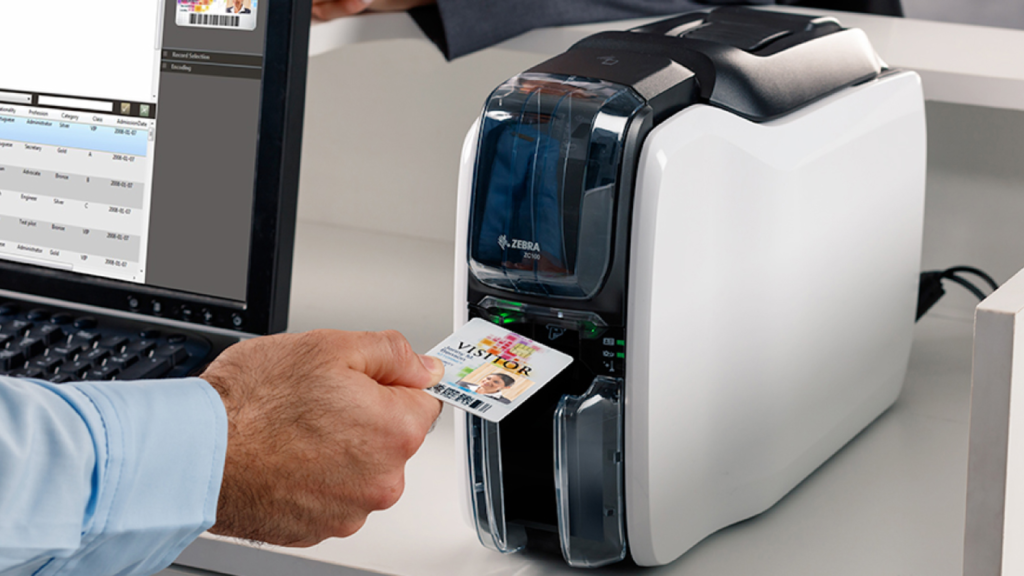
How to Select the Right Card Printer Based on Printing Volume and Card Material?
For businesses that rely on card production, choosing the right card printer is critical. Whether it’s employee badges, membership cards, or payment cards, the right choice ensures efficiency and quality. Many companies struggle to select a printer that meets their production needs and card materials requirements. The choice of a card printer often comes down to two key factors – print volume and card material. Both directly impact the printer’s performance, cost, and long-term reliability. This guide will walk you through carefully evaluating these factors to select the best card printer for your specific application.
Assessing Printing Volume for Optimal Printer Selection
Understanding your printing volume is the first step. Businesses with high printing demands require a card printer designed for speed and durability. High-capacity printers offer faster throughput, reducing wait times during production cycles.
Conversely, for low-volume printing, compact desktop models are the most suitable. These units strike a balance between performance and affordability, making them ideal for occasional use. Furthermore, evaluating monthly printing cycles ensures you select a printer that won’t wear out prematurely. Always match the printer’s rated capacity with your expected workload for best results.

Identifying Common Card Materials and Their Requirements
Card materials greatly influence the type of Card Printers you should choose. PVC cards are the most widely used due to their versatility and low cost. They work well with most entry-level and mid-range printers, making them ideal for everyday printing needs.
However, specialised cards, such as PET, polycarbonate, or composite materials, often require advanced printers. These materials demand higher heat resistance or enhanced printhead pressure. Choosing a printer designed for such cards prevents damage and ensures superior print quality on every card surface.
Difference between direct printing and retransfer
Different Card Printer technologies suit different materials and volumes. Direct-to-card (DTC) printers are ideal for printing directly onto standard PVC cards. They are cost-effective and efficient for most basic tasks, such as ID badges or access cards.
On the other hand, retransfer printers offer greater flexibility for various card types. They print onto a film that’s then applied to the card surface. This method produces higher print quality and edge-to-edge coverage, making it suitable for high-security applications and non-PVC cards. Selecting between these technologies depends on both print quality expectations and material compatibility.

Considering Durability and Print Longevity
Another important consideration is the durability of the printed cards. Frequent-use cards, such as those used by employees or for payment systems, must withstand wear and tear. In these cases, it’s best to select a Card Printer capable of applying protective overlays or laminates.
Additionally, retransfer printers typically offer greater resistance to fading, scratching, and chemical exposure. For businesses where card longevity is a priority, investing in high-durability printing solutions pays off in the long run. Always align your durability needs with the printer’s protective features for maximum value.
Factoring in Print Speed and Operational Efficiency
Speed can be a decisive factor, especially for large-scale card production. A high-speed card printer significantly reduces processing times. Some printers can produce hundreds of cards per hour without compromising quality.
However, it’s essential to strike a balance between speed and operational consistency. Rapid printing without proper maintenance can lead to errors or print defects. Evaluate print speed alongside reliability ratings and maintenance needs to ensure smooth daily operations. Choosing a well-balanced printer helps maintain high productivity while providing exceptional quality.

Analysing Total Cost of Ownership Beyond Initial Price
Many buyers focus on the initial cost of the Card Printer, but ongoing expenses also matter. Consumables, such as ribbons, cleaning kits, and replacement parts, contribute to the total cost of ownership over time.
Additionally, energy efficiency and maintenance requirements affect long-term expenses. Some models offer eco-friendly features that reduce power consumption and waste. Always consider both upfront pricing and lifecycle costs. By doing so, you ensure that your printer investment delivers sustained value and avoids unexpected financial burdens.
Compatibility with Software and Network Integration
In today’s connected environments, software compatibility is essential. Many Card Printer models come with proprietary software for card design and database management. Ensuring that these tools integrate well with your existing systems prevents workflow disruptions.
Moreover, network-ready printers allow multiple users to access the printer remotely. This capability is especially valuable in office environments or print service bureaus—Prioritise printers with robust connectivity features and intuitive interfaces to maximise productivity and streamline operations.
Making a Smart Investment in the Right Card Printer
Choosing the right card printer requires a careful evaluation of print volume and the type of card materials. By considering factors such as print speed, technology type, card durability, and operating costs, you can find the card printer that best meets your needs. Selecting the right card printer can streamline operations, enhance card quality, and lower long-term costs.


